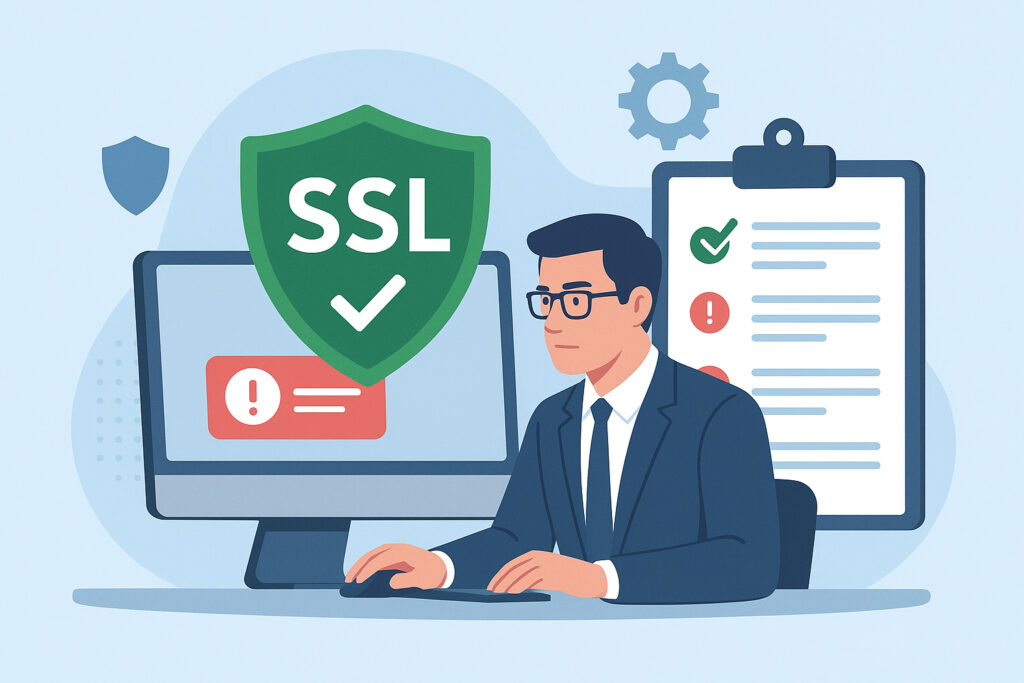You’re running a successful online business. Traffic is steady, sales are good, and everything seems to be working perfectly. Then, at 3 AM on a Tuesday, your SSL certificate expires. By the time you wake up, your website displays security warnings to every visitor. Customers can’t complete purchases. Your email stops working. And within hours, Google has flagged your site as ”not secure.”
This isn’t a hypothetical disaster scenario—it happens more often than you’d think. And the consequences? Lost revenue, damaged reputation, and frantic calls to your hosting provider at ungodly hours.
The Real Cost of SSL Certificate Failures
When an SSL certificate expires or malfunctions, the impact goes far beyond a simple warning message. Modern browsers actively prevent users from accessing sites with SSL issues, treating them as potential security threats. For e-commerce sites, this means zero transactions. For SaaS platforms, it means locked-out customers and support tickets piling up.
I learned this the hard way a few years back when managing multiple client websites. One certificate expired on a Friday afternoon—naturally, when I was already offline for the weekend. The client lost an entire weekend’s worth of online orders, roughly 15% of their monthly revenue. The technical fix took five minutes once I was aware of it. The relationship repair took considerably longer.
Why Manual Tracking Doesn’t Work Anymore
Some business owners keep spreadsheets tracking their SSL certificate expiration dates. Others set calendar reminders. In theory, this should work fine. In practice? Life gets busy. You’re juggling multiple domains, different hosting providers, various certificate authorities. That spreadsheet you created six months ago? Probably outdated. That calendar reminder? Easy to dismiss when you’re in the middle of something urgent.
The average business today manages 3-5 different domains, each with its own SSL certificate and renewal schedule. Multiply that across different providers, and you’ve got a recipe for missed renewals.
What Automated SSL Monitoring Actually Does
Professional SSL certificate monitoring works like a security guard for your website’s encryption. It continuously checks your certificates—not just once a day, but around the clock. Here’s what proper monitoring catches:
Expiration warnings: You get alerts weeks before a certificate expires, giving you plenty of time to renew. No more last-minute panics or expired certificates catching you off guard.
Configuration problems: Sometimes certificates are installed incorrectly. Mixed content issues, wrong intermediate certificates, or misconfigured chains can break SSL without you realizing it. Monitoring spots these immediately.
Unexpected changes: If someone accidentally modifies your SSL setup or if your hosting provider makes changes, you’ll know right away.
The Business Continuity Connection
Business continuity isn’t just about having backup servers or disaster recovery plans. It’s about maintaining uninterrupted service for your customers. SSL failures are among the most preventable causes of website downtime, yet they regularly catch businesses off guard.
Think about your payment processing. Most payment gateways require valid SSL certificates to function. An expired certificate doesn’t just block customers from accessing your site—it can halt your entire payment infrastructure. For online businesses, this means immediate revenue loss.
Email services, API connections, and third-party integrations all rely on valid SSL certificates. When yours fails, the cascade effect can impact systems you didn’t even realize were connected.
Real-World Impact on Customer Trust
Here’s something that doesn’t get discussed enough: customer perception. When someone visits your site and sees a security warning, they don’t think ”oh, the certificate probably just expired.” They think ”this site might steal my credit card information.”
Studies show that 85% of users will abandon a website if they see SSL warnings. Even worse, they’ll remember that experience. Getting those customers back isn’t just about fixing the technical issue—you’ve got to rebuild trust that was lost in seconds.
The Practical Setup
Setting up SSL monitoring doesn’t require technical expertise. Most services work by simply entering your domain name. The monitoring system then checks your certificate status multiple times per day and sends alerts via email, SMS, or even Slack if something needs attention.
The key is choosing a monitoring solution that gives you enough warning time. Getting an alert 30 days before expiration is infinitely more useful than one that arrives 3 days before—especially if you need to coordinate with external providers or get approval for purchases.
Don’t Wait for the Wake-Up Call
Every website owner who’s dealt with an unexpected SSL failure says the same thing: ”I wish I’d set up monitoring sooner.” The few minutes it takes to configure SSL monitoring can save you from hours of crisis management, lost revenue, and damaged customer relationships.
Your SSL certificate is the foundation of your website’s security and trustworthiness. Monitoring it isn’t paranoia—it’s basic business hygiene in 2025. The question isn’t whether you can afford to set up monitoring. It’s whether you can afford not to.
